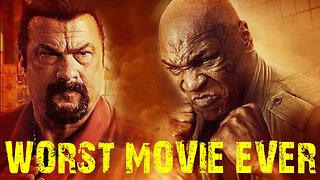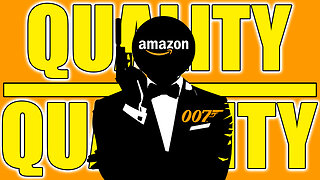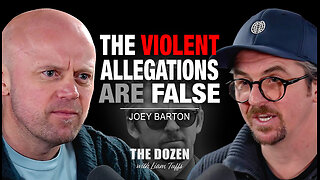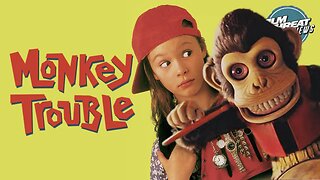Premium Only Content

Old Hollywood Bloopers (1939)
Spectacular epics which took advantage of new widescreen processes had been increasingly popular from the 1950s onwards. The 1980s and 1990s saw another significant development. The full acceptance of home video by studios opened a vast new business to exploit. Films which may have performed poorly in their theatrical run were now able to find success in the video market. It also saw the first generation of filmmakers with access to videotapes emerge. Directors such as Quentin Tarantino and Paul Thomas Anderson had been able to view thousands of films and produced films with vast numbers of references and connections to previous works. Tarantino has had a number of collaborations with director Robert Rodriguez. Rodriguez directed the 1992 action film El Mariachi, which was a commercial success after grossing $2 million against a budget of $7,000.
This, along with the explosion of independent film and ever-decreasing costs for filmmaking, changed the landscape of American movie-making once again and led a renaissance of filmmaking among Hollywood's lower and middle-classes—those without access to studio financial resources. With the rise of the DVD in the 21st century, DVDs have quickly become even more profitable to studios and have led to an explosion of packaging extra scenes, extended versions, and commentary tracks with the films.
In the US, the PG-13 rating was introduced in 1984 to accommodate films that straddled the line between PG and R, which was mainly due to the controversies surrounding the violent content of the PG films Indiana Jones and the Temple of Doom and Gremlins (both 1984).[59]
1988's Die Hard established what would become a common formula for many 1990s action films, featuring a lone everyman against a colorful terrorist character, who's usually holding hostages, in an isolated setting. Such films and their sequels are often referred to as "Die Hard on a _____": Under Siege (battleship), Cliffhanger (mountain), Speed (bus), The Rock (prison island), Con Air (prison plane), Air Force One (presidential plane), etc.
Film makers in the 1990 had access to technological, political and economic innovations that had not been available in previous decades. Dick Tracy (1990) became the first 35 mm feature film with a digital soundtrack. Batman Returns (1992) was the first film to make use of the Dolby Digital six-channel stereo sound that has since become the industry standard. Computer-generated imagery was greatly facilitated when it became possible to transfer film images into a computer and manipulate them digitally. The possibilities became apparent in director James Cameron's Terminator 2: Judgment Day (1991), in images of the shape-changing character T-1000. Computer graphics or CG advanced to a point where Jurassic Park (1993) was able to use the techniques to create realistic looking animals. Jackpot (2001) became the first film that was shot entirely in digital.[60] In the film Titanic, Cameron wanted to push the boundary of special effects with his film, and enlisted Digital Domain and Pacific Data Images to continue the developments in digital technology which the director pioneered while working on The Abyss and Terminator 2: Judgment Day. Many previous films about the RMS Titanic shot water in slow motion, which did not look wholly convincing.[61] Cameron encouraged his crew to shoot their 45-foot-long (14 m) miniature of the ship as if "we're making a commercial for the White Star Line".
American film industry (1995–2017)
All values in billions Year Tickets Revenue
1995 1.22 $5.31
1996 1.31 $5.79
1997 1.39 $6.36
1998 1.44 $6.77
1999 1.44 $7.34
2000 1.40 $7.54
2001 1.48 $8.36
2002 1.58 $9.16
2003 1.52 $9.20
2004 1.50 $9.29
2005 1.37 $8.80
2006 1.40 $9.16
2007 1.42 $9.77
2008 1.36 $9.75
2009 1.42 $10.64
2010 1.33 $10.48
2011 1.28 $10.17
2012 1.40 $11.16
2013 1.34 $10.89
2014 1.26 $10.27
2015 1.32 $11.16
2016 1.30 $11.26
2017 1.23 $10.99
As compiled by The Numbers[62]
Even The Blair Witch Project (1999), a low-budget indie horror film by Eduardo Sanchez and Daniel Myrick, was a huge financial success. Filmed on a budget of just $35,000, without any big stars or special effects, the film grossed $248 million with the use of modern marketing techniques and online promotion. Though not on the scale of George Lucas's $1 billion prequel to the Star Wars Trilogy, The Blair Witch Project earned the distinction of being the most profitable film of all time, in terms of percentage gross.[60]
The success of Blair Witch as an indie project remains among the few exceptions, however, and control of The Big Five studios over film making continued to increase through the 1990s. The Big Six companies all enjoyed a period of expansion in the 1990s. They each developed different ways to adjust to rising costs in the film industry, especially the rising salaries of movie stars, driven by powerful agents. The biggest stars like Sylvester Stallone, Russell Crowe, Tom Cruise, Nicole Kidman, Sandra Bullock, Arnold Schwarzenegger, Mel Gibson and Julia Roberts received between $15-$20 million per film and in some cases were even given a share of the film's profits.[60]
Screenwriters on the other hand were generally paid less than the top actors or directors, usually under $1 million per film. However, the single largest factor driving rising costs was special effects. By 1999 the average cost of a blockbuster film was $60 million before marketing and promotion, which cost another $80 million.[60] Since then, American films have become increasingly divided into two categories: Blockbusters and independent films.
Studios supplement these movies with independent productions, made with small budgets and often independently of the studio corporation. Movies made in this manner typically emphasize high professional quality in terms of acting, directing, screenwriting, and other elements associated with production, and also upon creativity and innovation.[citation needed] These movies usually rely upon critical praise or niche marketing to garner an audience. Because of an independent film's low budget, a successful independent film can have a high profit-to-cost ratio while a failure will incur minimal losses, allowing for studios to sponsor dozens[citation needed] of such productions in addition to their high-stakes releases.
American independent cinema was revitalized[citation needed] in the late 1980s and early 1990s when another new generation of moviemakers, including Spike Lee, Steven Soderbergh, Kevin Smith and Quentin Tarantino made movies like, respectively: Do the Right Thing, Sex, Lies, and Videotape, Clerks and Reservoir Dogs. In terms of directing, screenwriting, editing, and other elements, these movies were innovative and often irreverent, playing with and contradicting the conventions of Hollywood movies. Furthermore, their considerable financial successes and crossover into popular culture reestablished the commercial viability of independent film. Since then, the independent film industry has become more clearly defined and more influential in American cinema. Many of the major studios have capitalised on this by developing subsidiaries to produce similar films; for example, Fox Searchlight Pictures.
By this time, Harvey Weinstein was a Hollywood power player, commissioning critically acclaimed film such as Shakespeare in Love, Good Will Hunting, and the Academy Award-winning The English Patient. Under TWC Weinstein had released almost an unbroken chain of successful films. Best Picture winners The Artist and The King's Speech were released under Weinstein's commission.
Hollywood Boulevard from the Dolby Theatre, before 2006
The decade of the 2000s involved many significant developments in the film industries around the world, especially in the technology used. Building on developments in the 1990s, computers were used to create effects that would have previously been more expensive, from the subtle erasing of surrounding islands in Cast Away (leaving Tom Hanks' character stranded with no other land in sight) to the vast battle scenes such as those in The Matrix sequels and 300.[citation needed]
The 2000s saw the resurgence of several genres. Fantasy film franchises dominated the box office with The Lord of the Rings, Harry Potter, Pirates of the Caribbean, the Star Wars prequel trilogy (beginning in 1999), The Chronicles of Narnia, etc. Comic book superhero films became a mainstream blockbuster genre following the releases of Blade, X-Men, Unbreakable, and Spider-Man. Gladiator similarly sparked the revival of epic films, while the Bollywood-inspired Moulin Rouge! did the same for musical films. Computer animation replaced traditional animation as the dominant medium for animated feature films in American cinema. Although Hollywood still produces some films for the family audience, particularly animations, the vast majority of films are principally designed for young adult audiences.
-
 13:54
13:54
The Film Archives
1 year agoOld Hollywood Bloopers (1942)
630 -
 12:03
12:03
Space Ice
13 hours agoSteven Seagal's China Salesman - Mike Tyson Knocks Him Out - Worst Movie Ever
36.7K16 -
 11:37
11:37
Degenerate Jay
13 hours ago $6.18 earnedJames Bond Needs Quality Over Quantity From Amazon
67.2K3 -
 15:23
15:23
Misha Petrov
13 hours agoTrad Wives & Girl Bosses Go to WAR!
55.7K42 -
 2:03:11
2:03:11
TheDozenPodcast
11 hours agoFootball villain fighting the state: Joey Barton
39K1 -
 13:18:50
13:18:50
Scottish Viking Gaming
14 hours ago💚Rumble :|: Sunday Funday :|: Smash the Blerps and Vape the Terpes
86.3K8 -
 1:45:00
1:45:00
RG_GerkClan
16 hours ago🔴LIVE Sunday Special - It's Time for World Domination - Civilization VII - Gerk Clan
78.9K27 -
 LIVE
LIVE
Major League Fishing
4 days agoLIVE Tackle Warehouse Invitationals, Stop 1, Day 3
129 watching -
 23:34
23:34
marcushouse
16 hours ago $15.83 earnedBREAKING: Starship Launch IMMINENT – But What’s This SURPRISE Flight 9 Plan?! 🚀🔥
120K16 -
 8:43
8:43
Film Threat
1 day agoTHE MONKEY | Film Threat Reviews
107K3